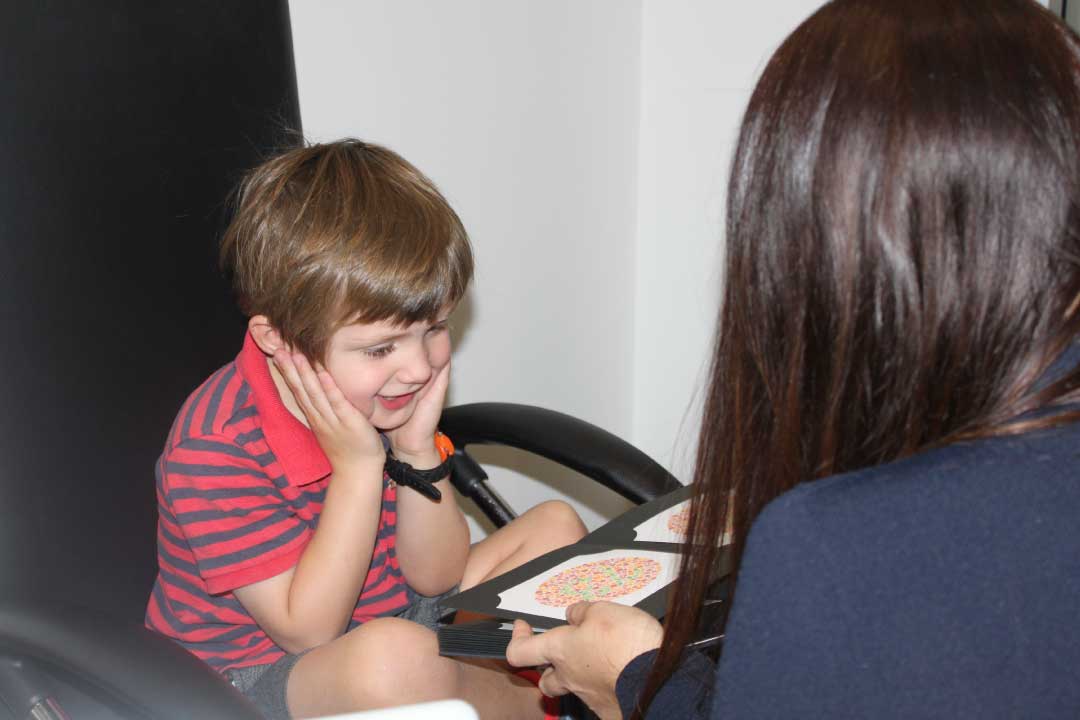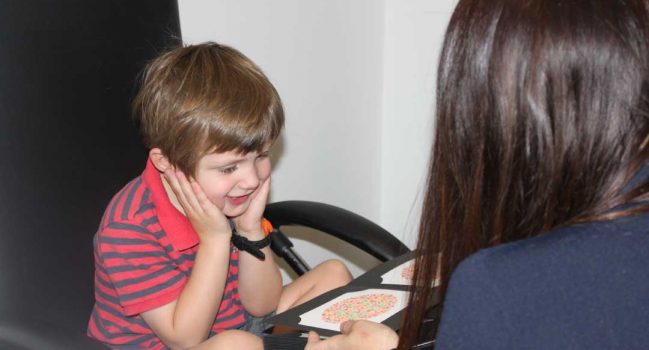
Paediatric eye health
Lots of things are developing during the first years of life, and vision is no different! That's why it's so important to monitor your child's vision, even if they don't report any concerns.
Thanks to our head office team for putting together this blog post.
It is important for children to have regular eye checks.
Few things are as important as vision in the development of a child. Yet even though most parents agree that early detection and treatment of vision problems is the key to prevent vision loss, only 32 per cent of Australian children under 14 have had an eye test.
During the early years of a child’s life, their eyes grow and develop rapidly. Detection of childhood eye problems early will reduce potential long-term problems while making the effects of treatment faster and more effective.
Vision problems can lead to issues in the child’s school performance, social interaction, and self-esteem. Undetected vision disorders can turn into serious problems in adulthood and have serious implications for the child’s future.
Vision screening vs eye examinations
It is important that your child’s eye examination is conducted by a qualified optometrist.
In general, when a paediatrician does a pre-school vision screening, their goal is to determine if there is any need for further evaluations. It’s a good start, but only an optometrist has the clinical tools and training to conduct a thorough evaluation of your child’s eye health.
Sometimes vision screenings can give parents a false sense of security about their child’s eye health. Parents wrongly assume that because their child’s vision is 6/6, there is no need for an eye exam. Only a comprehensive eye examination will test how well your child’s eyes work together, their ability to focus and it will detect any evidence of colour vision problems.
Even the most attentive parent is unable to detect a vision problem. Unlike a physical condition, vision problems are difficult to identify. At the same time, children rarely report vision problems because they naturally assume that what they are seeing is normal.
Eye tests for children
Eyecare Plus optometrists, who are trained to conduct paediatric eye tests, know that sometimes the experience can be scary for children, so they take steps to ensure that their little patients feel comfortable and relaxed.
Some of the child eye tests are like games, the charts have specially designed pictures and shapes and there are kid-friendly devices used for measurements and important readings.
Of course, parents can stay with their child throughout the eye exam.
Myopia prevalence
Every parent should be aware of the most common eye conditions that affect children as well as their symptoms. However, in recent years, no eye condition has caused as much concern as the rapid rise of myopia (or shortsightedness).
Myopia usually starts in childhood and progresses as children mature. When a person has myopia, they can see things that are close, but things far away are blurry.
Reduce screen time and increase green time
The main contributing causes of myopia are excessive screen time and lack of time outdoors. Most parents are already concerned about this behaviour, but over the last two years things have gotten worse. The way families have learned, socialised, and entertained themselves has made dependence on screens almost inescapable.
To help restore some life balance and limit the large amount of exposure children have to their screens we recommend applying the 20-20-20 rule. For every 20 minutes your child spends looking at a screen, ask them to look at an object in the distance, 20 feet away (or 6 metres away), for 20 seconds. This simple exercise will give their eyes a break.
Myopia is a progressive condition – which means it continues to get worse without intervention. However, if detected early enough, there are many ways to slow the progression.
Your Eyecare Plus optometrist will be able to offer you a myopia management option that best fits the lifestyle of your child.
Eye exam timeline
Since children’s eyes and visual system develop rapidly, early detection and treatment of vision disorders is important. Children with amblyopia, strabismus or significant myopia may suffer long-term consequences if their conditions are undetected at an early age.
- Age: six months.
Common eye tests for the six-month-old include assessments for colour vision, depth perception and focusing ability.
- Age: three.
A regular eye test, with special symbols is conducted, as well as tests for amblyopia, retina health and eye alignment. (Since symbols are used, the child does not need to know how to read for these tests).
- Age: five to six.
Tests to ensure that the child has the visual skills they need to perform well in school.
Additionally, it is recommended that school age children have annual eye tests.
The time it takes to conduct a comprehensive eye test will vary from child to child. Most likely, it will last approximately 45 minutes. Parents can stay with their child throughout the eye exam.
Although there may be out-of-pocket fees, the cost of providing eye care treatment later will be higher than the cost of diagnosing and treating them now. And most importantly, if left to worsen, these conditions will impact the vision and well-being of the child.
Scheduling a regular eye test with us is the best first step.
Contact us to book an appointment.
Ready to book an appointment?
Online bookings available or call us on (07) 3463 0349.
This website does not provide medical advice. It is intended for informational purposes only. It is not a substitute for professional medical advice, diagnosis or treatment. Never ignore professional medical advice in seeking treatment. If you think you may have a medical emergency, immediately dial Triple 0 (000).

